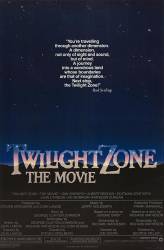Question: With the death of Vic Morrow, how were they able to film him being captured by two Nazi officers and thrown into a freight train car?
Question: During the Vietnamese child-rescue scene (in which Vic Morrow and two child actors were horrifically killed in real life), why on earth did they allow Vic Morrow and the children to perform their own stunt work in what was, without question, an incredibly chaotic and deadly-dangerous night-time shoot? With several large pyrotechnics exploding on all sides and helicopters hovering less than 20 feet over the actors' heads, it was a recipe for disaster. Why did the film makers consider it worth the risk to capture a few frames of Vic Morrow's blurry likeness in a wide, distant shot?
Answer: It's unlikely we'll ever fully understand. However, there were already a number of violations involving the children, prior to the stunt. It seems to boil down to the audiences at the time demanding more and more dangerous stunts and actions in their films that the film makers, and Landis, tried to accommodate. Landis also seemed less concerned about the dangers and either didn't think it would be that risky or was more concerned about finishing production on time. For whatever reason, Landis ignored warnings of the dangers. But given that he violated night time production laws involving the children, including hiding the children from welfare workers and telling them to keep everything a secret, shows he was more concerned with getting the shots and must have felt the stunt was that important.
Question: At the end of the first segment, the one with Vic Morrow, has it ever been determined what his character's ultimate fate would have been if Vic had lived?
Question: I don't understand how they finished filming the first story if Vic Morrow died. It's unlikely that they would've filmed it all, then done the stunt where he died. Could someone please explain it to me?
Answer: They'd already filmed most of the episode. The stunt was one of the final scenes to be filmed. They were able to work the story around any missing scenes.






Answer: Due to production logistics, movies are rarely filmed in a linear timeline. Storyboards visually map out the entire plot to provide the director continuity while filming different scenes, in various order, and often simultaneously with second-unit directors. As to the movie, Morrow's segment was originally supposed to end with the Vietnam scene. After Morrow rescued the two children, thus redeeming his character, he was to be returned to his own timeline. However, after the fatal accident and with the filming incomplete, the scenes were reordered so that the segment now ended with Morrow being sent to a Nazi concentration camp.
raywest ★